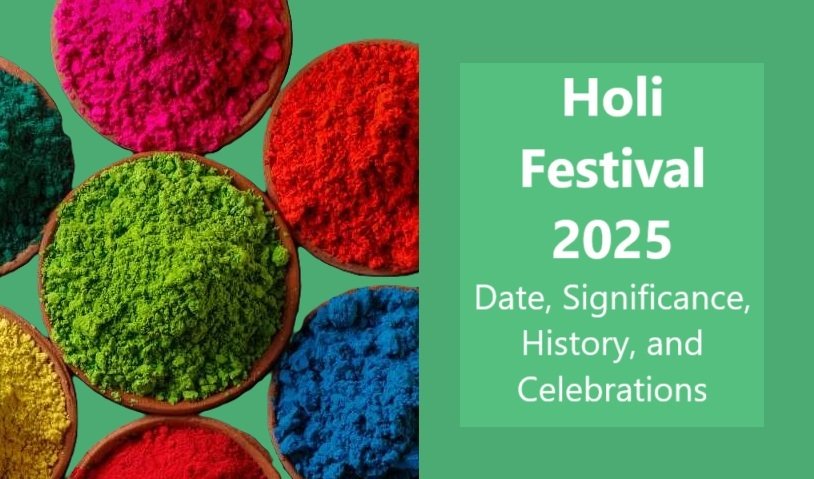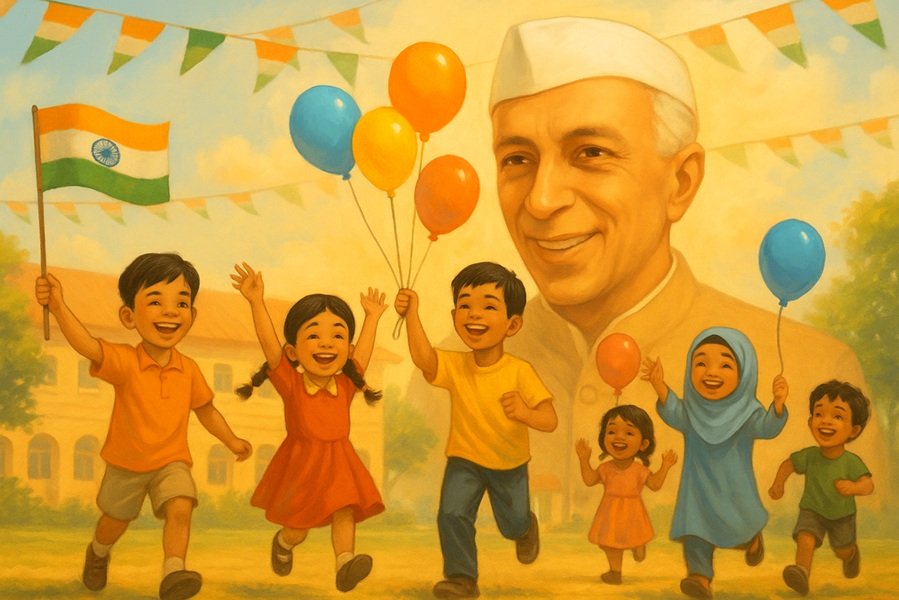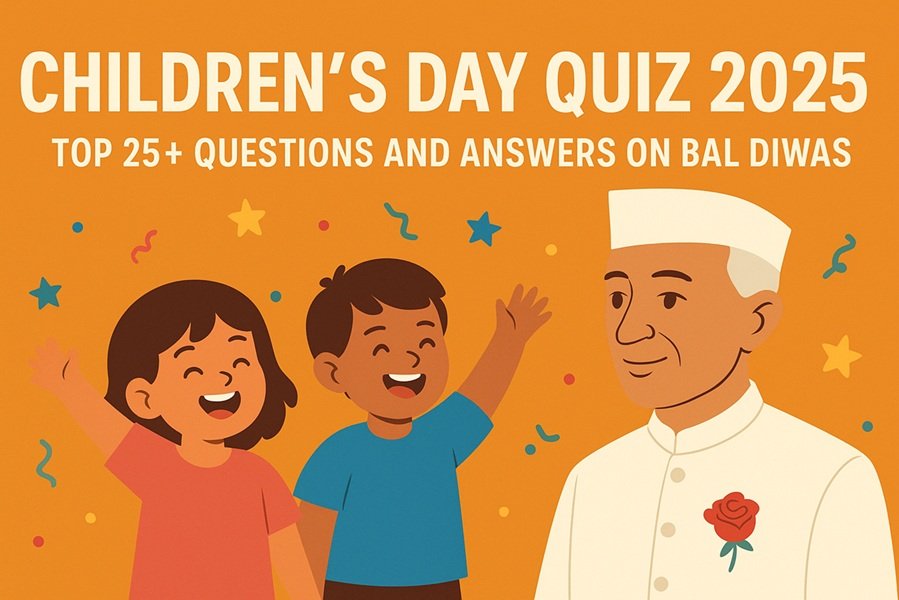
Holi, the vibrant and joyous festival of colors, is one of the most widely celebrated festivals in India. Symbolizing the triumph of good over evil and the arrival of spring, Holi is celebrated with enthusiasm and zeal by people of all ages. The festival also marks a time for forgiveness, renewed relationships, and unity. In 2025, Holi will be celebrated with great fervor on Friday, March 14, 2025, while Holika Dahan will take place on Thursday, March 13, 2025.
Holi 2025 Date and Time
- Holi (Rangwali Holi): Friday, March 14, 2025
- Holika Dahan (Chhoti Holi): Thursday, March 13, 2025
- Purnima Tithi Begins: 10:35 AM on March 13, 2025
- Purnima Tithi Ends: 12:23 PM on March 14, 2025
Notes: All timings are represented in 12-hour notation in local time of New Delhi, India, with DST adjustment (if applicable). Hours which are past midnight are suffixed with the next day date. In Panchang, the day starts and ends with sunrise.
Significance of Holi Festival
Holi signifies the victory of good over evil, love, and the arrival of spring. The festival promotes unity, forgiveness, and a fresh start. Holi also represents the end of harsh winters and the blooming of colors in nature. The playful throwing of colors reflects the joy and togetherness among people, regardless of caste, creed, or social status.
The Legend of Holika Dahan
Holika Dahan, observed a night before Holi, is rooted in the mythological story of Prahlad and Hiranyakashipu. Hiranyakashipu, a demon king, demanded worship from all, but his son Prahlad remained a devout follower of Lord Vishnu. To punish Prahlad, Hiranyakashipu sought help from his sister Holika, who had a boon to remain unscathed by fire.
Holika tricked Prahlad into sitting on a pyre with her, but due to his unwavering devotion to Lord Vishnu, Holika burned while Prahlad emerged unharmed. This event symbolizes the triumph of righteousness over evil and is commemorated by lighting bonfires during Holika Dahan.
How is Holi Celebrated?
1. Holika Dahan (Chhoti Holi)
On the eve of Holi, people gather around a bonfire for Holika Dahan. They perform rituals, sing devotional songs, and pray for the destruction of evil. The bonfire symbolizes the burning of Holika and the victory of good.
2. Rangwali Holi (Festival of Colors)
The main day of Holi, known as Rangwali Holi, is celebrated with vibrant colors, water balloons, and festive gatherings. People smear each other with colors, dance to the beats of drums, and enjoy traditional sweets like gujiya, malpua, and thandai.
3. Cultural Performances and Music
Communities come together for cultural programs, folk music, and dance performances. Songs like “Rang Barse” and “Holi Ke Din Dil Khil Jate Hai” echo in the air, adding to the festive spirit.
4. Special Holi Feasts
Feasting is an essential part of Holi. Families and friends gather to relish delicacies such as dahi vada, puran poli, bhang thandai, and various sweets. The sharing of food enhances the bond of friendship and love.
Why Holi is Celebrated: Mythological and Cultural Importance
- Mythology: Holi celebrates the divine love of Radha and Krishna, where Lord Krishna is believed to have applied color on Radha, symbolizing love beyond all differences.
- Agricultural Significance: Holi marks the onset of spring and the end of the winter season. It is also associated with the harvest of rabi crops, making it a festival of prosperity.
- Cultural Harmony: Holi promotes unity by bringing together people from all walks of life, transcending social barriers.
Rituals and Traditions of Holi
- Smearing of Colors: The most popular aspect of Holi involves throwing and applying colors among family, friends, and neighbors.
- Water Play: Children and adults use water guns and balloons to drench each other in water, adding fun to the celebrations.
- Traditional Songs and Dances: Folk songs and dances, especially from regions like Mathura and Vrindavan, showcase the cultural richness of Holi.
- Visiting Friends and Family: People visit homes, exchange sweets, and greet each other with “Holi Hai!”
Holi Celebrations Across India
- Lathmar Holi – Barsana and Nandgaon (Uttar Pradesh): Women playfully hit men with sticks, recreating the mythological prank of Lord Krishna on Radha.
- Phoolon Wali Holi – Vrindavan: Holi celebrated with flowers at the Banke Bihari Temple is a mesmerizing sight.
- Hola Mohalla – Punjab: Sikhs celebrate with martial arts displays, poetry, and community service.
- Shantiniketan Holi – West Bengal: Celebrated as Basanta Utsav, it includes cultural performances, songs, and dances inspired by Rabindranath Tagore.
- Royal Holi – Rajasthan: Udaipur and Jaipur celebrate Holi with grand processions, royal events, and cultural shows.
Safety Tips for Holi 2025
- Use organic and natural colors to avoid skin allergies.
- Apply coconut oil on hair and skin before playing to prevent damage.
- Protect your eyes by wearing sunglasses.
- Stay hydrated and consume food from hygienic sources.
- Be cautious while using water guns and balloons to prevent injuries.
Eco-Friendly Ways to Celebrate Holi
- Opt for herbal colors instead of chemical-based ones.
- Conserve water by playing dry Holi.
- Organize community celebrations to minimize individual impact.
- Avoid plastic balloons to reduce environmental pollution.
Conclusion
Holi 2025, falling on Friday, March 14, promises vibrant celebrations across India. With Holika Dahan on Thursday, March 13, and Purnima Tithi starting at 10:35 AM on March 13 and ending at 12:23 PM on March 14, the festival will be observed with traditional rituals and joyous gatherings. Holi is more than just a festival of colors; it is a celebration of unity, love, and the victory of good over evil.
Celebrate this Holi with joy, love, and responsibility, ensuring safety for yourself and the environment. Happy Holi 2025!



